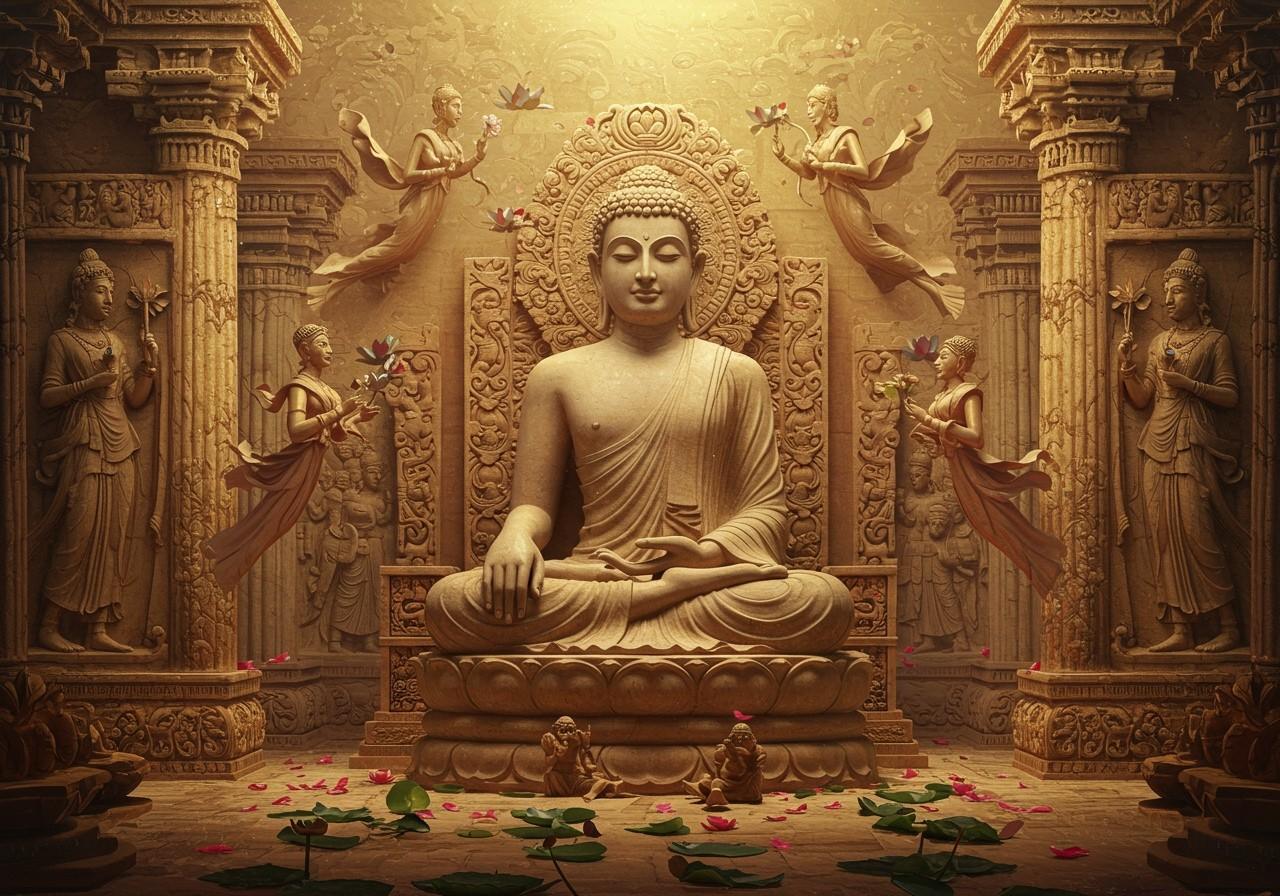
Gandhara, nestled in modern-day northwest Pakistan and eastern Afghanistan, holds a significant place in Buddhist history. This region’s unique cultural blend birthed a distinctive form of Buddhist art and greatly influenced Buddhist traditions. This article explores Gandhara’s historical context, its unique Buddhist art, its influence on Buddhist traditions, and its enduring legacy.
Historical Context of Gandhara
Geographical and Historical Significance
Gandhara’s strategic location on the Silk Road made it a crossroads of cultures. Influenced by various empires, including the Achaemenids, Greeks, Mauryans, and Kushans (1st century BCE to the 7th century CE), the region became a melting pot of traditions. Buddhism arrived during Emperor Ashoka’s reign (3rd century BCE), transforming Gandhara into a hub for Buddhist monasteries and scholarship.
Influence of Various Dynasties
- Achaemenids: Introduced Persian cultural elements, impacting Gandhara’s artistic and architectural styles. Their administrative structure also influenced the region.
- Greeks: The Hellenistic influence, following Alexander the Great’s conquests, is evident in Gandhara art’s depiction of the Buddha. Greek artistic canons significantly shaped the region’s sculptural traditions.
- Mauryans: Emperor Ashoka’s embrace of Buddhism led to its widespread propagation in Gandhara. The Mauryan empire’s support established the foundation for Gandhara’s future as a Buddhist center.
- Kushans: This dynasty oversaw a golden age for Gandhara Buddhist art and culture (1st century BCE to the 7th century CE), facilitating its flourishing and widespread dissemination.
Buddhist Learning and Pilgrimage
Gandhara’s monasteries and educational centers thrived, attracting pilgrims and scholars. These institutions played a crucial role in preserving and transmitting Buddhist teachings, fostering intellectual and spiritual growth.
Gandhara Buddhist Art
Distinctive Features
Gandhara art is renowned for its fusion of Greco-Roman artistic techniques and Buddhist themes. This syncretism resulted in the depiction of the Buddha in human form, influenced by Greek sculptural ideals. This unique style distinguishes Gandhara art from other Buddhist artistic traditions.
- Intricate Carvings: Detailed motifs and patterns adorn the sculptures, showcasing the artisans’ skill and the richness of the artistic tradition.
- Stupas and Monasteries: These structures, essential to Buddhist practice, were embellished with Gandhara art, demonstrating the integration of art and spirituality.
Notable Sculptures
- Fasting Buddha: This iconic representation portrays Buddha’s period of asceticism, highlighting his spiritual journey. Sculptures often depict the emaciated form he took during this time.
- Standing Buddha: Symbolizing enlightenment and serenity, the standing Buddha is a common motif in Gandhara art. The sculptures often feature distinctive drapery and hand gestures (mudras).
Spread of Gandhara Art
Gandhara art played a pivotal role in spreading Buddhism to Central Asia and China. The visual representation of Buddhist concepts through this art form facilitated the transmission of these ideas across geographical boundaries.
Influence of Gandhara on Buddhist Traditions
Development of Mahayana Buddhism
Gandhara significantly contributed to the development and spread of Mahayana Buddhism. Monks from Gandhara translated Buddhist texts into Chinese, shaping East Asian Buddhist practices.
- Iconography: Gandhara’s artistic style profoundly influenced Buddhist art in East Asia. The depictions of the Buddha and other Buddhist figures became models for artistic representation in these regions.
- Preservation of Knowledge: Gandhara played a crucial role in preserving and transmitting Buddhist teachings. The scholarly activities in its monasteries ensured the continuity of Buddhist thought.
Gandhara Buddhism Today
Contemporary Relevance
Archaeological discoveries continue to unveil new insights into Gandhara’s rich Buddhist heritage. Preservation efforts aim to protect these invaluable sites for future generations. Modern Buddhist practices, particularly in South Asia, still reflect the influence of Gandhara’s artistic and spiritual legacy.
Poojn.in: Your Source for Buddhist Ritual Items
Poojn.in, India’s leading online store for cultural and religious goods, offers a wide selection of items relevant to Buddhist practices, reflecting the rich traditions of Gandhara. Explore our collection to enhance your spiritual journey:
- Radha Krishna Bigraha: While not directly related to Gandhara Buddhism, this exquisite statue embodies the devotion and artistry found in religious sculptures.
- Maa Laxmi Lord Ganesha Murti: This murti represents prosperity and auspicious beginnings, echoing the reverence for deities found in many cultures, including those influenced by Buddhism.
- Pure Brass Maa Tara Murti: Maa Tara, a revered figure in some branches of Buddhism, embodies compassion and protection.
Conclusion
Gandhara’s legacy lies in its significant contributions to Buddhist art, history, and the development of Buddhist traditions. Its strategic location and the confluence of cultures fostered a unique environment where Buddhist thought and artistic expression flourished. The distinctive Gandhara style, with its Greco-Roman influences, played a crucial role in disseminating Buddhist imagery and teachings across Asia, leaving an enduring impact on Buddhist art and practice.


